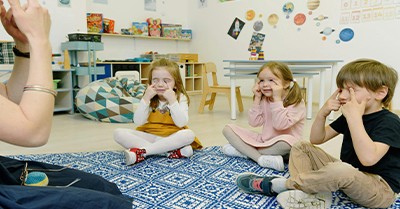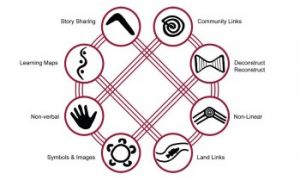In early childhood education, the practice of moving educators to new rooms each year is common. Some services see it as a way to keep things fresh, while others worry it disrupts continuity for children. So, are yearly room changes supporting children’s well-being or unsettling the very relationships they rely on?
The Case For Yearly Room Changes
- Fresh perspectives: Educators bring new energy, ideas, and approaches to different age groups.
- Professional growth: Moving between rooms helps educators broaden their skills and become more versatile.
- Team morale: Some staff enjoy variety and feel reinvigorated by new challenges.
- Administrative clarity: Families often expect children to “move up” with the calendar year, making transitions predictable.
The Case Against Yearly Room Changes
- Continuity of care: Children thrive on stable relationships. Frequent changes can disrupt attachment and security.
- Loss of expertise: Educators who specialize in infants, toddlers, or preschoolers develop deep knowledge that benefits children.
- Stress for staff: Constant reshuffling can unsettle educators, leading to burnout and disengagement.
- Family concerns: Parents may feel anxious when their child loses a trusted educator.
Alternatives to Consider
- Staggered transitions: Move children when they are developmentally ready, not just by age or calendar.
- Partial continuity: Keep at least one familiar educator in the room while others move.
- Family grouping: Instead of age-based rooms, group children across ages with educators working in zones (e.g., “quiet” vs “loud”).
- Consultation: Ask educators where they feel most effective and families what they value most for their child’s transition.
Reflection Questions for Teams
- What do we gain by moving educators annually?
- What do children lose if we disrupt continuity?
- How do families perceive yearly transitions?
- Are we prioritising educator well-being, child well-being, or administrative convenience?
- Could a blended approach (some educators stay, some move) better meet everyone’s needs?
There’s no single “right” answer. Annual room changes can support educator growth and fresh perspectives, but they can also disrupt the secure relationships children depend on. The key is intentionality: making decisions based on what best meets the needs of children, families, and educators—not just tradition or convenience.
Further Reading
Strategies To Build Relationships With Children
Building Relationships with Families and Co-Workers
Forming Relationships With Children In Childcare
Importance Of Relationships Between Families and Educators
Critical Reflection Questions For Relationships With Children







 As an Educator in Australia, your pay rate falls under the Children’s Services Award 2010. This award states the minimum amount that an employer can
As an Educator in Australia, your pay rate falls under the Children’s Services Award 2010. This award states the minimum amount that an employer can When working as a qualified Early Childhood Teacher (with a university degree) within a service, your rate of pay will come from the Educational Services
When working as a qualified Early Childhood Teacher (with a university degree) within a service, your rate of pay will come from the Educational Services When working as a Diploma Qualified Educator your pay rate is from the Children's Services Award 2010. This Award states your minimum rate of pay
When working as a Diploma Qualified Educator your pay rate is from the Children's Services Award 2010. This Award states your minimum rate of pay When working as a Cert 3 Qualified Educator, your pay rate is from the Children's Services Award 2010. This Award states your minimum rate of
When working as a Cert 3 Qualified Educator, your pay rate is from the Children's Services Award 2010. This Award states your minimum rate of Educational Leaders play a crucial role in their early childhood service by ensuring that the educational program aligns with best practices and supports the holistic
Educational Leaders play a crucial role in their early childhood service by ensuring that the educational program aligns with best practices and supports the holistic In early childhood education and care, ratios are more than a technicality—they are a frontline safeguard. Every child deserves responsive supervision, emotional connection, and developmental
In early childhood education and care, ratios are more than a technicality—they are a frontline safeguard. Every child deserves responsive supervision, emotional connection, and developmental Here’s a comprehensive Mobile Phone and Smart Watch Policy tailored for early childhood education and care (ECEC) services in Australia, aligned with the latest 2025
Here’s a comprehensive Mobile Phone and Smart Watch Policy tailored for early childhood education and care (ECEC) services in Australia, aligned with the latest 2025 With the new national child safety reforms kicking in on 1 September 2025, early childhood services like yours have a real opportunity to lead the
With the new national child safety reforms kicking in on 1 September 2025, early childhood services like yours have a real opportunity to lead the The Sea of Fish Challenge is a national initiative that invites children, educators, families, and communities to create and display fish artworks as a symbol
The Sea of Fish Challenge is a national initiative that invites children, educators, families, and communities to create and display fish artworks as a symbol Across the early childhood education and care sector, educators are sounding the alarm: current staffing ratios are insufficient to deliver safe, meaningful, and developmentally appropriate
Across the early childhood education and care sector, educators are sounding the alarm: current staffing ratios are insufficient to deliver safe, meaningful, and developmentally appropriate


